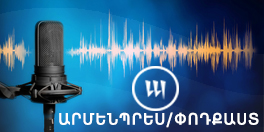“Genocides that Never Were” – The Times of Israel on Khojaly events
 15:32, 7 March 2017
15:32, 7 March 2017YEREVAN, MARCH 7, ARMENPRESS. The blogs of The Times of Israel referred to the alleged “genocides”, including the Khojaly events, that were manufactured for various political purposes.
According to the publication, the purpose of this article is not to provide reasons, military justifications, or the history behind each of these events or conflicts, but rather to place in context the amplification and widening of each event, manufactured for political purposes.
“Armenpress” presents some parts of the article:
“A great loss of life occurred in late February 1992 in Khojaly. Their deaths reached approximately 30,000 who lost their lives in this conflict. Khojaly was used by Azerbaijan as a staging ground for the continuous shelling of Stepanakert, the capital of Nagorno Karabakh (Artsakh Republic). Neutralizing the sources of shelling and rocket fire is typical in any war. However, the neutralization of the Khojaly staging ground by the Nagorno Karabakh forces was transformed into a rallying cry for a demoralized Azerbaijani army; led to the ouster of then Azerbaijani president, Ayaz Mutalibov; and, most importantly, was exploited by Azerbaijan to advance a claim that Armenians committed some form of mass atrocity. Having been subjected to genocide at the hands of the Turkish government during WWI, as well as experienced horrific pogroms across Azerbaijan from 1988 to 1990, Armenians were now put on the defensive by the Azerbaijani claim that they committed genocide on the inhabitants of Khojaly.
Initially, the event went unreported in the Azerbaijani press. In September, 1992 “official Baku” reported 159 dead to Human Rights Watch. Today, the count claimed is 613. It is nearly impossible to verify the statistics that the Azerbaijani government used to generate their numbers. In addition, there are no available statistics on the number of dead Azerbaijani soldiers in this count. Much of Khojaly’s death count resulted from Azerbaijani soldiers interspersed among civilian evacuees who were being escorted by Armenians through a humanitarian corridor.
Azerbaijan periodically shows a purported 1992 Khojaly photo of a mother grieving over her five dead children. However, that photograph is from the Erzurum earthquake in Turkey published in the Turkish Hurriyet newspaper on October 30, 1983. This fake photo was, for quite some time, the predominant document presented by Baku as proof of a “massacre” or “genocide” in Khojaly, until the reality became known. Not surprisingly, as years have passed, the embarrassment of multiple exposés of this clearly fake photo has resulted in its removal from Azerbaijani-sponsored sites.
A sampling of fake and anachronistic photos includes a black and white image (third photo down) on the web page of the Supreme Court of the Republic of Azerbaijan claimed to be the result of Armenian barbarism in Khojaly. However, this photo is taken from a color photo of the massacre in Racak, Kosovo in January 1999”, the article says.
The article also quotes a part of former Azerbaijani President Mutalibov’s interview where he says the Khojaly events were organized in order to have ground for his resignation. He also talked about the humanitarian corridor provided by Armenians.
“During these 25 years, Azerbaijanis have used their manufactured claims appearing to be victims of a crime against humanity”, the author of the article said.




















